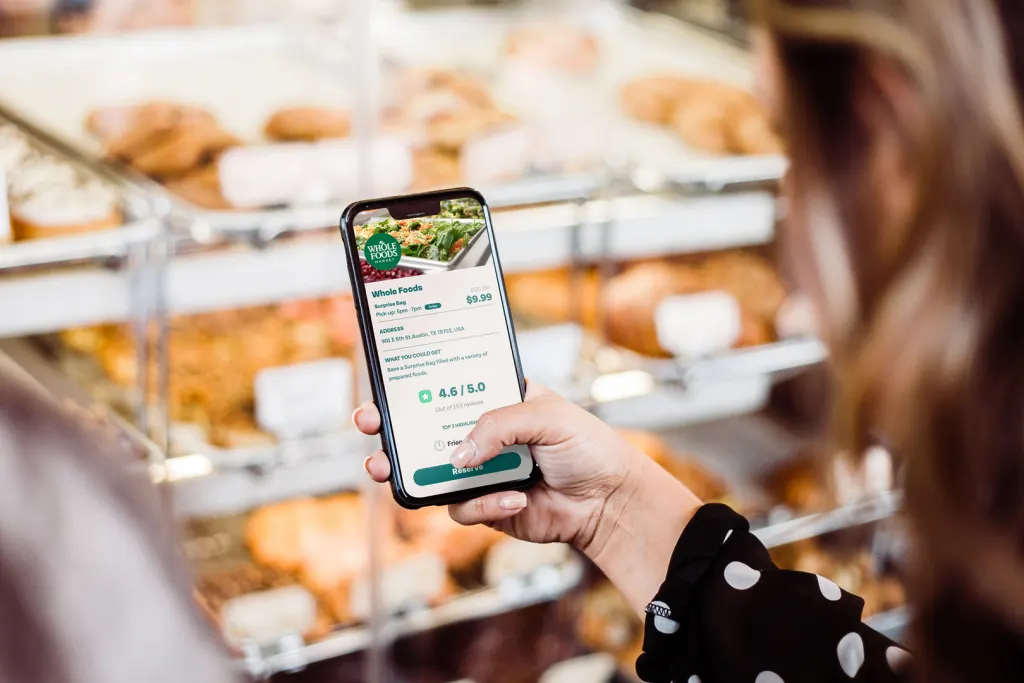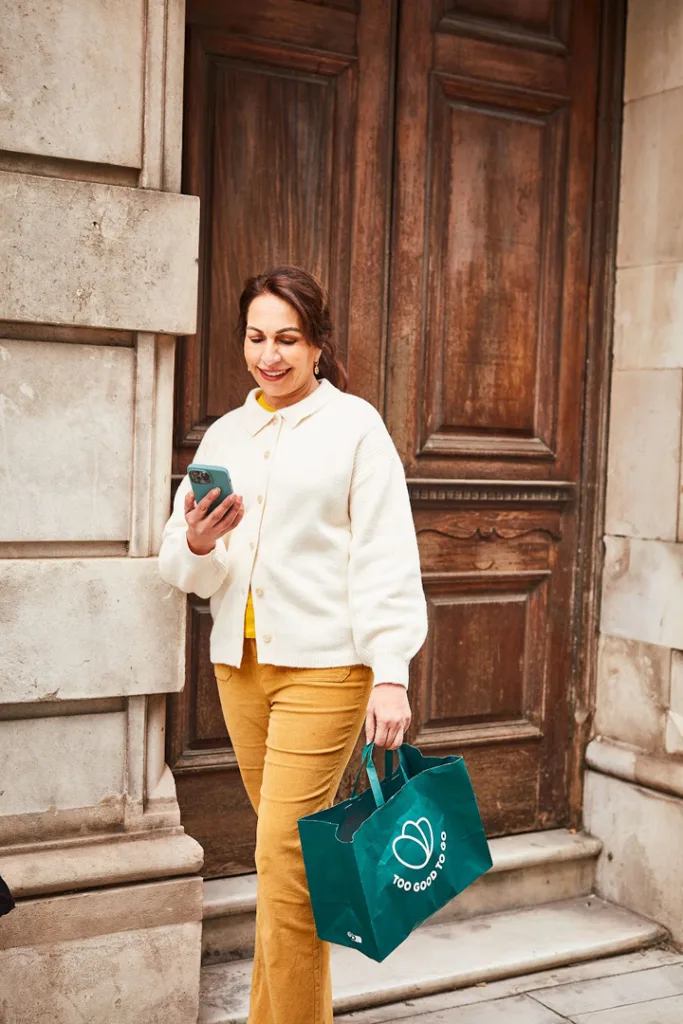Here’s how you can get a ‘surprise bag’ of cheap food from Whole Foods
Here’s how you can get a ‘surprise bag’ of cheap food from Whole Foods
Too Good To Go is now at more than 450 Whole Foods stores, a big expansion of both companies’ efforts to divert food waste.
In the United States, between 30% and 40% of all food produced is wasted, and grocery stores can be a major contributor. Whether it’s packaged items past their sell-by date, bruised produce, or leftover bakery goods, one estimate says grocery stores generate nearly 5 million tons of surplus food a year.
Some of that goes straight to landfills or off to be incinerated, while another portion gets donated. Now, Whole Foods has a new way to divert food waste: customers can purchase discounted “surprise bags” of excess bakery or prepared foods through the surplus food app Too Good To Go.
Too Good To Go is now at more than 450 Whole Foods stores and aims to expand the offering to all its 530-plus stores around the country. It’s the first nationwide grocery chain partnership for Too Good To Go, which also sells bags of surplus food from cafés, restaurants, and local markets.

How Whole Foods deals with food waste
Whole Foods had systems to divert food waste from landfill even before the Too Good To Go partnership. “Our strategy as a whole is simple: decrease, donate, divert,” says Caitlin Leibert, vice president of sustainability at Whole Foods Market.
“The very first thing we need to do is decrease food waste from ever happening,” she says. The Too Good To Go partnership falls into this category. The grocery store also upcycles imperfect foods—such as bruised produce or small offcuts from its seafood counter—into its prepared foods, like pastries or soups. Then, it donates other items to food banks and rescue organizations.
Though Leibert says it’s difficult to capture just how much surplus food Whole Foods produces, she noted that the company donated 34 million pounds of food in 2023 alone, equivalent to 28 million meals. Since 2013, Whole Foods has donated more than 210 million pounds of food, equivalent to 176 million meals.
The last line of defense is to divert food from landfills—where, because it decays so quickly, it can contribute a significant amount of methane. Of all landfill methane emissions, an estimated 58% comes from food waste specifically. To avoid that, Whole Foods has compost and animal feed programs at more than 85% of its stores (and is working to grow that number).

Whole Foods and Too Good To Go
Whole Foods and Too Good To Go began working together last July through a pilot program in Austin, where the grocery chain is headquartered. Leibert says she doesn’t see the partnership “cannibalizing” the company’s donation program, and that the pilot helped determine how the two solutions can work together. “There’s loads of opportunities that don’t make sense necessarily for Too Good To Go but do make sense for donation, and so these programs complement each other,” she says.
Currently, Too Good To Go is focused on “highly perishable” items that can be more challenging to donate. She notes that its customers will have two Whole Foods surprise bag options. A $9.99 prepared foods bag (with a retail value of $30) could include soups, ready-to-eat meals like rotisserie chicken or spaghetti and meatballs, protein salads, and possibly items from the hot bar. A $6.99 bakery bag (with a retail value of $21) could include breads, muffins, scones, and cookies.
Though stores may be able to package up or discount surplus items on their own—the way many bagel shops sell bags of day-olds—working with Too Good To Go streamlines the process and also alerts more people to these sales. “Too Good To Go brings this to life on a platform targeted to individuals who are very passionate about food waste,” Leibert says. During the pilot, she says the team was “blown away” by how quickly the Too Good To Go bags sold out.
Exactly what customers get will depend on the day and what’s left over; store employees will put together the bags, which Too Good To Go users can then reserve through the app and pick up in person at a designated time. (The pickup window is open usually around the time the store closes; at some locations, it ranges from 9 p.m. to 10:30 p.m.) “That’s the beauty of a surprise bag,” Leibert says. “We’re able to really use this program for the opportunity we have at each individual store.”
ABOUT THE AUTHOR
Fast Company
(20)



